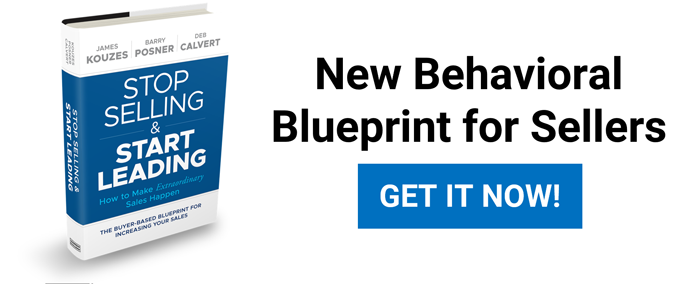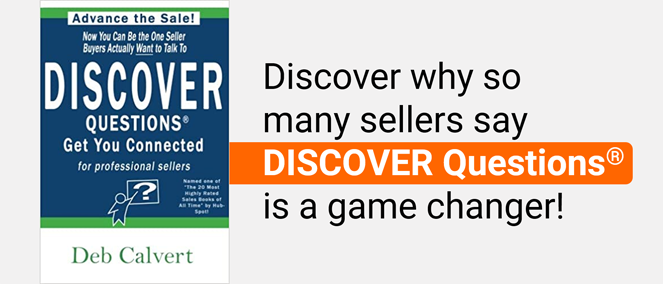Buyers Want Less Diagnostic, More Dialogic analysis
We need to talk about customer needs assessment. Before we can talk about the all-new, buyer-driven, field-tested and proven-to-advance-the-sale dialogic needs assessment, we have to start with a few basics.
A quality customer needs assessment process (needs analysis, discovery, customer probe... whatever you call it in your sales process) is sorely lacking in most sales organizations.
How can you improve your customer needs assessment?
It's not lacking on paper. Every sales process includes some form of needs identification. It generally comes immediately after the opening and is often the hook to get a first meeting (sounds like "I'd like to spend a few minutes learning about your needs to see if we can help you").
It is, however, lacking in practice. Sellers want to shortcut through true needs assessment and pounce on the first sign of any need, no matter how weak. Sellers make sweeping and optimistic assumptions about buyers' needs. They operate on those assumptions rather than genuinely identifying and understanding those needs. As a result, they get lukewarm reactions to the solutions they offer.
Needs assessment is also lacking in depth. They don't drill down they're in a hurry to get to solution and, sometimes, because they lack interest and/or don't fully appreciate the value of probing the need.
Because needs assessment has been misused and misunderstood, it's become little more than a check-the-box activity. Buyers detest it. Sellers conduct needs assessments poorly and move past them prematurely.
Part of the problem lies in the way we're defining needs assessment as diagnostic.
What's Wrong with the Standard Diagnostic Customer Needs Assessment?
If you're using a question model (even a good one like S.P.I.N.), you're conducting a diagnostic needs assessment.
If you have a list of questions you ask every buyer, that's a diagnostic needs assessment.
If you meet with a buyer with the intent to diagnose a problem that you can solve, you're setting up a diagnostic needs assessment.
You're limiting yourself. For comparison's sake, let me tell you a story.
Nearly six years ago, I had multiple hospitalizations and lots of specialists to deal with following a severe and complex leg injury. Whether in the hospital, at the wound care center, or in a doctor's office, my experience was basically the same.
Doctor: "What's going on with your leg today?"
Me: Describing symptoms, going fast because doctors' eyes glaze over quickly... Until I start to talk about "The pain..."
Doctor: Whips out a prescription pad and writes another one for more or different or stronger painkillers
Me: "But what about..."
Doctor: "Schedule a time to come back in...."
Some visits, the surgeon never even looked at my leg. Most specialists never asked questions beyond their own area of expertise. Few consulted the notes of other doctors. Most were looking for the most immediate, obvious need and raced to quickie, narrow solutions based on their own capabilities and expertise.
That's probably why it took five years to finally get a true diagnosis and an actual solution. It's why I spent six months in a wheelchair and 14 days in a hospital (three separate admissions). It's why I lost partial function in my leg and why I lost a portion of my calf.
Turns out all of that could have been avoided if any one doctor had asked the right questions or done the right (simple!) test to determine that insufficient blood flow was the primary problem.
I'm afraid we do the same all too often in sales.
- We diagnose quickly and only to the extent that it serves us.
- We don't take time or ask the right questions in order to understand what buyers are experiencing.
- We prescribe treatments for superficial symptoms without actually solving buyers' problems.
In our haste to diagnose and solve, we alienate buyers.
That's why we need to change our entire approach to needs assessment.
Dialogic Customer Needs Assessment Engages Buyers
We know, directly from buyers themselves, what they want to sellers to do. We know because we asked 530 B2B buyers to tell us. They told us that 30 specific behaviors would cause them to be more likely to meet with sellers and more likely to buyer from them, too.
At the top of this list of buyer preferences are seller behaviors that enable and engage buyers. One of these behaviors is:
The seller engages in two-way dialogue with me as he/she strives to understand my needs.
Read that again. It's not describing a dialogic, old-school needs assessment. Let's break this down. It's too important not to.
Engage: To occupy the attention or efforts of another; to attract and hold fast; to involve or commit oneself to something.
Two Way: Providing or allowing for movement in opposite directions; allowing exchange; both sending and receiving signals.
Dialogue: Exchange of ideas or opinions; to discuss frankly; conversation giving equal platform to both parties.
Strive: To exert oneself vigorously; to make strenuous efforts toward.
Understand: To perceive the meaning; to comprehend; to be thoroughly familiar with; to appreciate clearly the nature and subtleties; to interpret; to grasp the significance, implications and importance of something.
Needs: Requirements, urgent wants, essential necessity; a condition defined by a lack of something essential; wants or demands to be fulfilled
Self-evaluate the questions and process you use to identify how you can create or deliver something of value to your buyers.
Can you tick all the boxes as defined above in this single behavior? Most sellers cannot. They aren't allowing for two-way dialogue.
Without two-dialogue, buyers are not engaged and are less likely to buy. Strong, purposeful questions that open dialogue are the missing ingredient that changes a ho-hum dialogic needs assessment into a stimulating discussion.
Dialogic Needs Assessment Creates Value
The dialogue -- all by itself -- is of value to buyers. Sellers who engage buyers in this way differentiate themselves and become "the one seller that buyers actually want to talk to."
With improved needs assessment, sellers get more information more quickly. They build trust. They create value by making buyers think and brainstorm, co-creating insights as they riff off each other.
Because empowered buyers strongly prefer a highly customized, relevant and meaningful experience, sellers need quality questions to deliver on buyer expectations. Dialogic style needs assessment creates personalized customer experiences that are high value.
Dialogic Needs Assessment Builds Buy-In and Results in More Sales
By building trust and value, sellers who conduct needs assessments in the form of a true dialogue have numerous advantage. They have more information to work with and can craft better solutions. They have buyers who look forward to meeting with them again. They have connections that keep them in the decision-making process. And they have buyers who value their contributions so much that they will advocate for them internally.
Buyers buy from sellers who behave in this way. To have all these advantages, increase the frequency of this behavior:
The seller engages in two-way dialogue with me as he/she strives to understand my needs.
The Stop Selling & Start Leading® movement provides insights into precisely what buyers would like their sellers to do. We're covering it all, step by step, here in the CONNECT2Sell Blog. The buyer research with 530 B2B buyers gives us a blueprint for selling more effectively.



